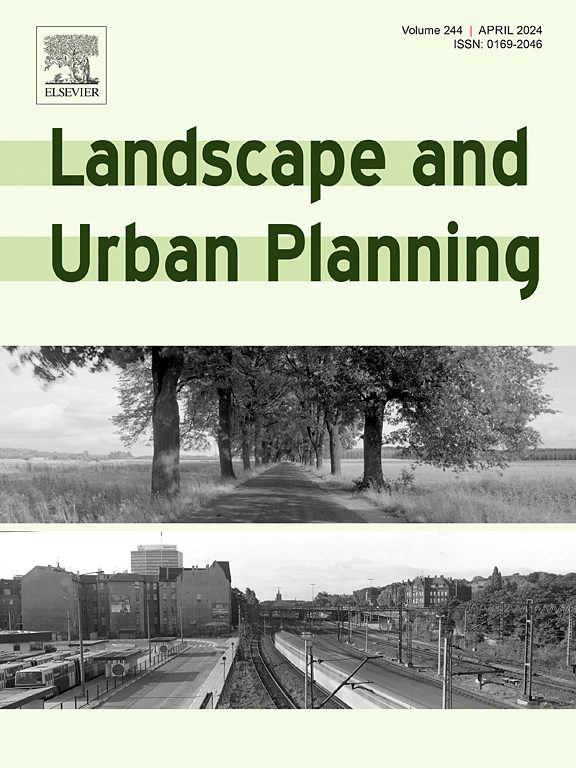Equity impacts of street tree spacing guidelines: A case study in two Los Angeles neighborhoods
IF 7.9
1区 环境科学与生态学
Q1 ECOLOGY
引用次数: 0
Abstract
Growing interest in green infrastructure to improve urban life and address the challenges of climate change is often channeled, at the level of municipal government, into programs to plant street trees. Existing disparities in urban tree canopy are well documented, yet the street tree spacing guidelines which dictate where trees can be located relative to other infrastructure in the right-of-way, which serve to severely limit the possibilities for adding future trees, receive little attention. We present a case study of a low- and high-income neighborhood in Los Angeles, modeling two policy scenarios, and find that structural differences between the two neighborhoods (e.g., parcel size, intersection density, and street width) differentially limit the number of trees which could be planted in each neighborhood, suggesting that existing guidelines may be a barrier to achieving municipal equity goals. Less restrictive guidelines were found to minimize between-neighborhood differences in tree quantity, yet substantial disparities remained in tree stature, a proxy for tree canopy, suggesting that shade equity may be more difficult to address with guideline changes alone.
街道树木间距指南对公平的影响:洛杉矶两个社区的案例研究
为改善城市生活和应对气候变化的挑战,人们对绿色基础设施的兴趣与日俱增,在市政府层面,这种兴趣往往被引导到种植行道树的计划中。城市树冠的现有差异有据可查,但行道树间距准则规定了行道树相对于道路上其他基础设施的位置,严重限制了未来植树的可能性,因此很少受到关注。我们对洛杉矶的一个低收入社区和一个高收入社区进行了案例研究,模拟了两种政策方案,发现两个社区的结构差异(如地块大小、交叉口密度和街道宽度)不同程度地限制了每个社区可种植树木的数量,这表明现有的指导方针可能是实现市政公平目标的障碍。研究发现,限制性较小的指导方针可以最大限度地减少街区之间在树木数量上的差异,但在代表树冠的树木高度上仍然存在巨大差异,这表明仅靠指导方针的改变可能更难实现树荫公平。
本文章由计算机程序翻译,如有差异,请以英文原文为准。
求助全文
约1分钟内获得全文
求助全文
来源期刊

Landscape and Urban Planning
环境科学-生态学
CiteScore
15.20
自引率
6.60%
发文量
232
审稿时长
6 months
期刊介绍:
Landscape and Urban Planning is an international journal that aims to enhance our understanding of landscapes and promote sustainable solutions for landscape change. The journal focuses on landscapes as complex social-ecological systems that encompass various spatial and temporal dimensions. These landscapes possess aesthetic, natural, and cultural qualities that are valued by individuals in different ways, leading to actions that alter the landscape. With increasing urbanization and the need for ecological and cultural sensitivity at various scales, a multidisciplinary approach is necessary to comprehend and align social and ecological values for landscape sustainability. The journal believes that combining landscape science with planning and design can yield positive outcomes for both people and nature.
 求助内容:
求助内容: 应助结果提醒方式:
应助结果提醒方式:


